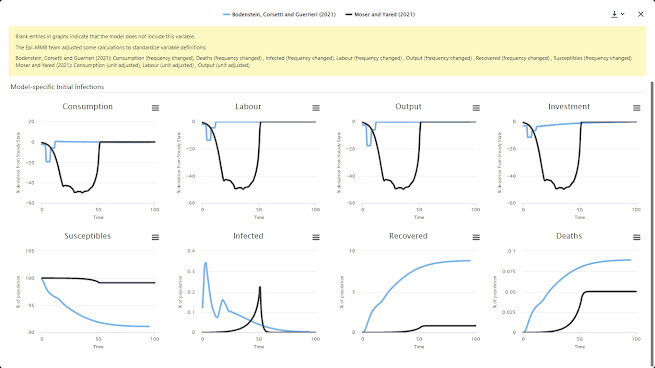Competitive equilibrium versus social planner?
What are differences between competitive equilibrium and social planner solutions in pandemic macroeconomic models?
Why is it interesting?
The comparison shows the results of the pandemic shock for commonly defined macroeconomic aggregates and epidemic variables between a model with competitive equilibrium (MY_21) and a model with social planner solutions (BCG_21).
What to do on the EPI-MMB?
- Models: MY_21, BCG_21
- Shocks: Model specific shock: initial infections of < 0.001% of the population for MY_21 and initial infections of 0.1% the population for BCG_21
- Variables: Consumption, Investment, Labour, Output, Susceptibles, Infected, Recovered, Deaths
What is interesting?
Notably, MY_21 predicts a deeper recession and a milder pandemic spread than BCG_21. One major contributing factor is the difference in equilibrium types between the two models. In BCG_21, individual agents make economic decisions while taking into account different infection rates and evolutions of the pandemic across two production sectors. Meanwhile, in MY_21, the government or the social planner optimally chooses and commits to a series of lockdown policies following the pandemic outbreak. The social planner perceives the disease spread as more alarming than individual economic agents. The enforced lockdown results in deeper and more persistent economic downfalls whilst fewer deaths and infections. Note that the lower initial infection shock also contributes to the less severe pandemic evolution in MY_21.
Reference: Moser and Yared (2021), Bodenstein, Corsetti and Guerrieri (2021)

Comments
Post a Comment